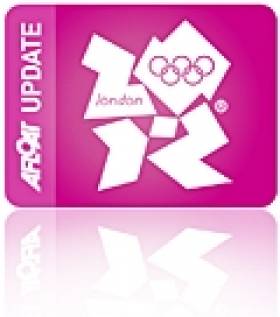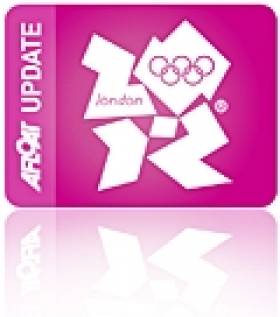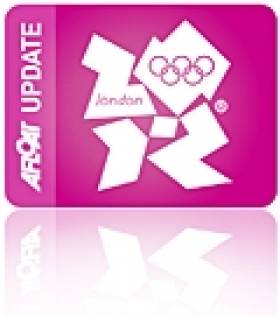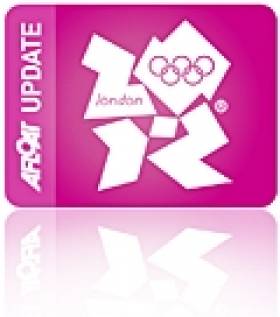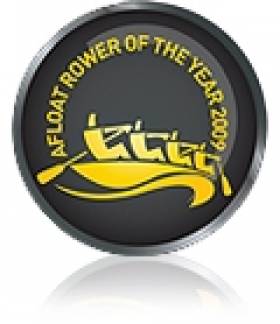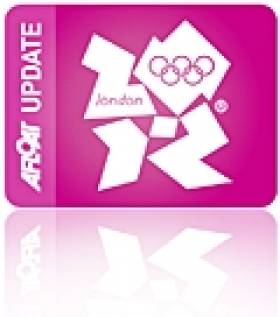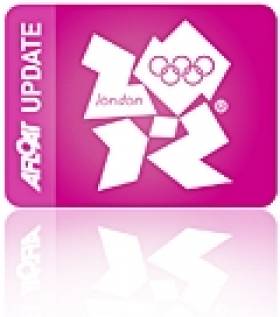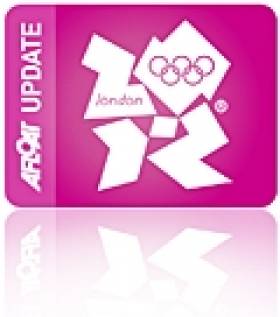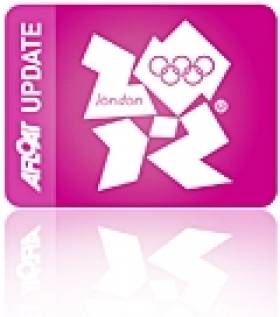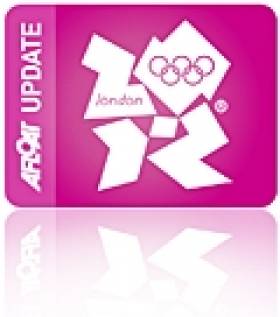Displaying items by tag: Olympic
O'Leary and Burrows Ready for First Gun in Perth
#PERTH2012 – Hotly tipped Irish keelboat duo Peter O'Leary and David Burrows race tomorrow for Olympic qualification and world championship honours in the first race of the Star keelboat worlds, the second week of the ISAF World Championships in Perth.
Belfast Lough 49er dinghy triallists Ryan Seaton and Matt McGovern and Royal North Laser sailor, James Espey both start racing on Monday.
Focus Now on Barcelona as Owens and Flannigan Miss the Cut
#PERTH2011 – Double Olympian Ger Owens and his crew Scott Flannigan can still qualify for the London Olympics in the 470 class but to do so they will need to be in top form next May in Barcelona having missed the standard in Perth today. The 2012 470 world championships in six months time is the second and final opportunity for the Dublin duo to qualify but places, just two months before the Olympic regatta itself, are extremely limited.
Annalise Back in Medal Contention with Two More Race Wins
#PERTH2011 – Irish sailor Annalise Murphy needs to beat America's Paige Railey by at least four places to win a bronze medal in tommorrow's Laser Radial final following a stunning performance in Perth today with two further race wins at the ISAF World Championships.
18 knot winds gave the Natonal Yacht Club Sailor (who qualified for the London Olympics this week) the chance to shine again today and significantly narrow the point's gap going in to Sunday's Medal Race.
Annalise Murphy Race Win Video
A breathaking 63–metre lead by Annalise Murphy in the second race of the ISAF worlds in Perth this week is captured on youtube (below), The 16-knot performance by the 6 foot 1inch Dun Laoghaire single-hander is well worth a peek. Join the clip around the 20 minutes mark for race commentary,aerial shots and some impressive moves from Annalise! Yes that's a race win against the best in the world!
Holly Nixon is Afloat Rower of the Year 2011
#ROWING – Holly Nixon is the Afloat Rower of the Year for 2011. The Enniskillen woman won the Afloat Rower of the Month award for August after making history by becoming the first Ireland rower to medal at the World Junior Championships. Nixon took silver in the single sculls behind Anne Beenken of Germany at Dorney Lake, the site of next year’s Olympic Games regatta. In June she had joined up with Sanita Puspure, Lisa Dilleen and Eimear Moran to win the elite quadruple sculls at Henley Women’s Regatta.
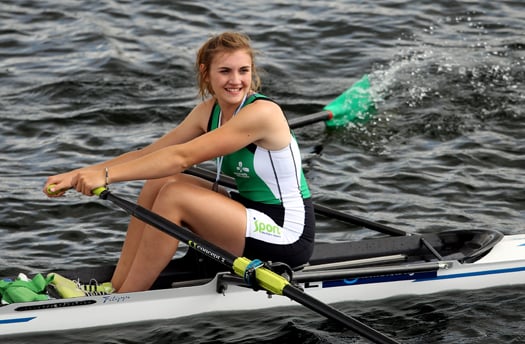
Ireland's Holly Nixon pictured after winning Silver in the Women's Single Sculls at the 2011 World Rowing Junior Championships at Dorney Lake in August. Photo: Scott Heavey/Getty Images
The Devenish College student and Portora rower is now concentrating on her A Levels, but her performances at the recent National Assessment and approaches from American universities with scholarship offers suggests that she has a bright future as a rower.
Rower of the Year: The judging panel is made up of Liam Gorman, rowing correspondent of The Irish Times, President of Rowing Ireland Anthony Dooley and David O'Brien, Editor of Afloat magazine. Monthly awards for achievements during the year appear on afloat.ie. Keep an eye for the Rower of the Month awards in 2012.
Revised Scoring Puts Annalise Second
#PERTH2011–A revision of the official scoreboard at the ISAF World Sailing Championships in Perth to include the scores of top Belgian girl Evi Van Acker now places Dun Laoghaire's Annalise Murphy in second place overall with eight points. Earlier scores showed Murphy leading the women's Laser Radial class but she now trails the Belgian by two points. The string of superb results for the Irish contender keeps her in contention for tomorrows final series race before the medal race scheduled for Sunday.
Annalise Surfs into First Place at Perth Sailing World Champs
#PERTH2011–Counting individual scores of a 1, 2,1,1,4 Dun Laoghaire's Annalise Murphy surged to the top of the Laser Radial fleet today at the 2011 Sailing World Championships in Perth.
The official scoreboard (below) is a pretty picture for Ireland even though it looks like some top scores (such as the results of the Belgian girl) are missing for an as of yet unexplained reason. UPDATE HERE
Racing today in the blue flight the Dun Laoghaire 21-year old added a 2,1,4 to her scorecard (below). Racing was held in choppy seas and winds building from 11 to 19 knots, Murphy's favourite conditions. Overall six races have been sailed and Murphy looks set to hit her Olympic qualification target but the prospect of an overall podium placing is now a real possibility. Racing continures tomorrow.
Murphy now appears to be on the same eight points as Holland's Marit Bouwmeester (NED) with Czech girl Veronika Fenclova nince points further adrift in third.
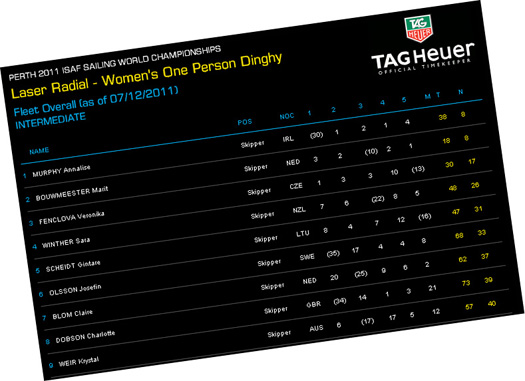
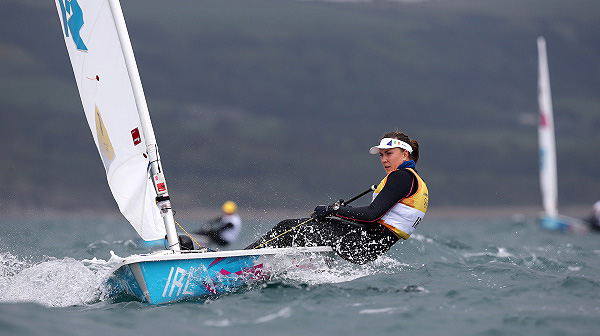
Tight Laser Radial racing in Perth. Ireland's Annalise Murphy tops the leaderboard after six races. Photo: Richard Langdon
Shark Sighting in Olympic Waters off Perth
#PERTH2011 – First electrical storms now possible shark attacks! It's all happening for the Irish Olympic team seeking qualification at the Perth 2011 ISAF Sailing World Championships this week.
Aerial shark patrols over the sailing courses have been stepped up today after a credible sighting of a large shark in the Fremantle Fishing Boat harbour.
Event Director John Longley today briefed international sailing teams on the sighting late Tuesday, saying it was being taken seriously.
"The report was made by a professional fisherman who is regarded as a reliable source," Longley told sailing officials. "We have informed Western Australian government authorities who will ensure that the usual helicopter shark patrol will concentrate on checking out the Fremantle course area. Our course boats and the Fremantle Rescue Service will also be on extra alert after the reported sighting."
"The safety of athletes is paramount." Longley said. "This is part of the reason why we changed the racing rules for the Perth 2011 ISAF Worlds not to penalise sailors who need assistance to get back into their boats after a capsize."
More than 1100 sailors from 79 nations are taking part in the ISAF Sailing Worlds Championships being held between 3 – 18 December.
Electrical Storms Keep Sailors Ashore in Perth
#PERTH2011 – Electrical storms have forced cancellation of all fleet racing on Day 4 of the Perth 2011 ISAF Sailing World Championships. Ireland's Annalise Murphy, who celebrated an opening race win yesterday, was due to sail as was Finn sailor Ross Hamilton and 470 duo Ger Owens and Scott Flannigan. The Race Committee at the Perth 2011 ISAF Sailing World Championships abandoned all racing at 1350 local time on the afternoon of Day 4, Tuesday 6 December.
After a morning of loud thunder, lightning and sometimes heavy rain, the Race Committee made the decision to abandon racing for the day. The forecast of electrical storms and possible wind gusts up to 100kph continuing through to evening kept the fleet sailors killing time in the boat parks hoping for an afternoon's start.
Despite looming dark skies, Women's Match Racing kicked off on Fremantle's inner harbour at 1000 local time. The first match was one postponed from Sunday because of calm conditions. Easterlies gusting up to 17 knots greeted the two Spanish crews for Tuesday's first flight.
A change in the official race results later in the day gave the match to ESP-2's Silvia Roca and her crew instead of Tamara Echegoyen (ESP-1) as first posted in results.
Mandy Mulder (NED-1) and her crew won the second match by a very convincing 37 seconds against Peru. In contrast, an exciting finish for Olivia Price (AUS-2) when her team beat Genevieve Tulloch (USA-2) by just one second.
The last match of the morning - between Sweden and Brazil - finished with another tight margin - seven seconds - favouring the Brazilians.
Late on Tuesday, the Race Committee announced that all fleet races would start at the earlier local time of 12 noon on Wednesday, 7 December. Competition Manager Skip Lissiman said it was hoped weather conditions would allow an extra race to be sailed in each of the four fleet classes.
The other delayed races will be held on either Thursday or Friday which are nominated lay days, according to each class.
"Safety was the ultimate concern today," Lissiman said. "The electrical storms posed too big a danger to sailors on the water
Murphy Opens Perth Account with Race Win
#PERTH–A race win by Dun Laoghaire's Olympic sailor Annalise Murphy confirms Ireland's pre event billing as a favourite in the Laser Radial class in the opening rounds of the Perth 2012 World Sailing Championships today.
The first day of fleet racing in Perth was held in light, fluctuating breezes as four classes took to the water on Day three of the ISAF Sailing World Championships. With only the lightest of sea breezes reaching just over ten knots, the temperature in Perth soared to 34 degrees.
On the 470 course a top 10 score was posted by fellow Dun Laoghaire sailors Ger Owens and Scott Flanigan.
Other Irish sailors competing today included Ross Hamilton in the Finn who scored a 28th.
Laser Radial
Belgium's Evi van Acker dominated racing in the Yellow Laser Radial Fleet, with the world number two winning both her races.
Meanwhile world fifth ranked sailboarder , Paige Railey (USA) had a mixed day finishing her first race in eighth, before claiming a second place in race two.
In the Blue Fleet, Veronika Fenclova (CZE) and Marit Bouwmeester (NED) were the stand out performers.
Fenclova, the world number three, finished first and third while current World No. 1 Marit Bouwmeester was consistent with a second and a third.
The Laser Radial competition is scheduled to continue on the Parmelia course at 1200 Perth time.
Finns
Five-time Finn world champion Ben Ainslie took an early lead on the first day of his event at the Perth 2011 ISAF Sailing World Championships, winning both his races with ease in the Yellow Fleet.
Ainslie won from the front in the first race but had to come from fifth place to take another win over compatriot and current world champion Ed Wright to put himself firmly at the top of the fleet.
"I didn't have a particularly good start (in the second race) but I was good on the downwind reach and was in front at the second mark," he said.
On why he was so good at downwind sailing, he said: "It has to do with the conditions and technique. After all I have been sailing a lot. You just get into a groove and go with it."
In the Blue Fleet, the 2004 Olympic silver medalist Rafa Trujillo (ESP) led the first race from start to finish while Pieter-Jan Postma (NED), put a poor race behind him to lead all the way and take the second race. Trujillo rounded off a great day with a third place, to end the day in second overall behind Ainslie. A second and a fifth for the 2008 Silver medalist Zach Railey (USA) leaves him in third overall.
The Finn event is scheduled to continue on Tuesday at 1300 Perth time on the Leighton course.
Women's Match Racing
Silke Hahlbrock (GER) put an end to Anna Tunnicliffe's undefeated run in the final flight of Women's Match Racing on Monday, with the German managing to come from behind to get over the line in front as the World No. 1 lagged with sea weed caught on her keel.
In the previous flight, Hahlbrock (GER) had managed to edge out Australia's Nicky Souter, also previously undefeated, in another tight match.
It was also a great day for Finland's Silija Lehtinen, who is yet to lose a match, despite stiff competition throughout the day.
At the conclusion of day three, Finland remained the only undefeated team with USA-1, AUS-1, GER, and NZL also finishing strongly.
Women's Match Racing is scheduled to start on Tuesday at 1000 Perth time on the Inner Harbour course.
Men's 470
Finnish brothers Joonas and Niklas Lindgren were successful on the Success course, winning both Yellow Fleet races on the opening day of the Men's 470 competition on Monday.
A stunning start in race one by Ridgely Balladares and Chavez Rommel (PHI) was overcome by the Finnish sailors, who took and extended their lead to win 34 seconds ahead of runners-up, Kliger Gideon and Eran Sela (ISR).
Phil Sparks and David Kohler (GBR) took an early lead in race two for the Yellow Fleet but the race was won by Mathew Belcher and Malcolm Page with the Lindgren brothers settling for second.
In the Blue Fleet, New Zealand sailors Paul Snow-Hansen and Jason Saunders maintained a strong lead throughout race one, with the real competition occurring for the minor places.
Swedish pair Anton Dahlberg and Sebastian Ostling, Panagiotis Mantis and Pavlos Kagialis (GRE) and France's Pierre Leboucher and Vincent Garos battled throughout the race before finishing second, third and fourth respectively.
While several boats had to be towed out because of light winds ahead of race one, the second round of racing saw an increase in breeze and a light chop.
The last race of the day for Men's 470 Blue Fleet was won by Luke Patience and Stuart Bithell (GBR).
Gabrio Zandona and Pietro Zucchetti (ITA) improved on their previous eighth place to finish second, followed by Sime Fantella and Igor Marenic (CRO).
Women's RS:X
Despite light winds delaying the start of the Women's RS:X competition, the breeze blew in unexpected results for the yellow fleet with World No. 1 Blanca Manchon (ESP) finishing 46th overall with lower than expected finishes in both her races.
Manchon's compatriot Marina Alabau (ESP) fared better, with a third and an 11th place finish putting her in sixth place for the day.
The Chinese Women's RS:X team thrived in the afternoon's light winds, with all four of the country's athletes placing in the top 10 in the Yellow Fleet.
In the Blue Fleet, wins for Lee Korzits (ISR) and Laura Linares (ITA), and solid results in their other race, had the two sailors high in the progressive results.
But Bryony Shaw (GBR) recorded a second and a third to share the overall lead with Korzits.
The Women's RS:X event is scheduled to continue on Tuesday on Centre course at 1230 local time.


























